Advertisements
Advertisements
Question
Use Kirchhoff's rules to obtain conditions for the balance condition in a Wheatstone bridge.
Solution
Let us consider a Wheatstone bridge arrangement as shown below.

Applying Kirchhoff's loop law to the closed loop ADBA, we get
I1R−IgG−I2P=0 .....(1)
Here, G is the resistance of the galvanometer.
Applying Kirchhoff's loop law in the closed loop BDCB, we get
IgG+(I1+Ig)S−(I2−Ig)Q=0.....(2)
When the Wheatstone bridge is balanced, no current flows through the galvanometer, i.e. Ig=0
∴ From (1), we get
I1R−I2P=0
⇒I1R=I2P
`=>I_1/I_2=P/R" ......(3)"`
Similarly, from (2), we get
I1S−I2Q=0
⇒I1S=I2Q
`=>I_1/I_2=Q/S" .....(4)"`
From (3) and (4), we get
`P/R=Q/S`
or `P/Q=R/S`
This is the required balance condition in a Wheatstone bridge arrangement.
APPEARS IN
RELATED QUESTIONS
Determine the current in each branch of the network shown in figure.

Given n resistors each of resistance R, how will you combine them to get the (i) maximum (ii) minimum effective resistance? What is the ratio of the maximum to minimum resistance?
State Kirchhoff's rules for an electric network. Using Kirchhoff's rules, obtain the balance condition in terms of the resistances of four arms of Wheatstone bridge.
In the given circuit, assuming point A to be at zero potential, use Kirchhoff’s rules to determine the potential at point B.

Find the equivalent resistances of the networks shown in the figure between the points a and b.
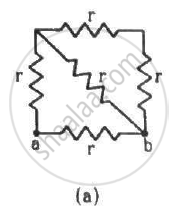
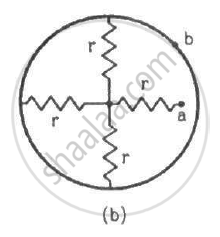
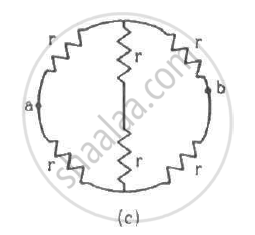
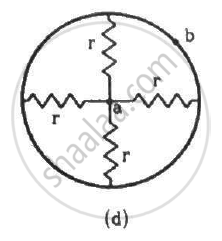
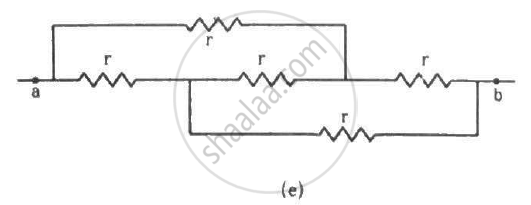
A capacitor of capacitance 8.0 μF is connected to a battery of emf 6.0 V through a resistance of 24 Ω. Find the current in the circuit (a) just after the connections are made and (b) one time constant after the connections are made.
State Kirchhoff ’s voltage rule.
The instrument for the accurate measurement of the e.m.f of a cell is ______.
The circuit in figure shows two cells connected in opposition to each other. Cell E1 is of emf 6V and internal resistance 2Ω; the cell E2 is of emf 4V and internal resistance 8Ω. Find the potential difference between the points A and B.
